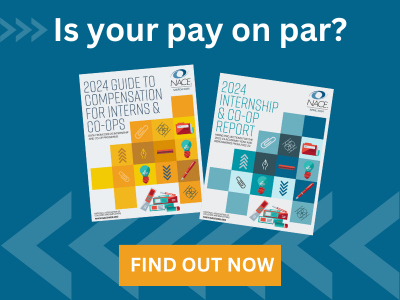Spotlight for Recruiting Professionals
Long-promoted as a viable replacement for employers’ physical presence on campus, virtual career fairs had not gained significant traction prior to COVID-19, neither among most organizations targeting entry-level talent, nor among students themselves.
In Succeeding in the New Normal: Student Attitudes and Effective Virtual Recruiting, Mary Scott, founder of the Scott Resource Group, provides the following context: NACE research conducted pre-COVID found that employers ranked the use of virtual career fairs at No. 11 of 14 branding techniques (at 24.2% of participating organizations); less than 1% considered them to be their most effective branding technique.
In the whitepaper, Scott adds that, from the candidates’ perspective pre-COVID, only 13.9% of graduating seniors taking part in NACE’s student survey had accessed a virtual career fair as a job-search resource, ranking it last among 14 evaluated options. Moreover, of those students who had attended a virtual career fair, a scant 5.5% considered the experience to be “very” or “extremely” useful.
Now, in our new reality, employers need to alter the perception of and increase the value for students attending virtual career fairs. Among the recommendations Scott offers are to:
- Make sure that students understand the WIIFM (“What’s in It for Me”) of virtual career fairs and recruiting events, and set detailed expectations about how the selected platform works; providing a testing option in advance of students’ accessing the event on a “live” basis is always a good idea.
- Ensure that students can engage with employers one-on-one at virtual career fairs; the inability to do so was consistently identified as a major dissatisfier among those who had attended a virtual fair.
- Give students an opportunity to indicate that they have attended a virtual career fair and to leave a digital resume. They want to know that their visiting your booth has been “registered” in some way, and there is no better way to communicate that than to encourage their leaving a digital resume, or to provide some other means for tracking interaction that is apparent to them. Telling students to find answers to their questions online and/or to apply online, without any assurance that their attendance has been noted, is the surest way to replicate the very worst of campus career fairs in a virtual setting.
- Recognize that, despite the ability to see and interact with others using digital platforms, such engagement can lack the authenticity of face-to-face meetups. This means that instead of trying to replicate your in-person events step by step, you need to consider what to do differently in the virtual world.
Succeeding in the New Normal: Student Attitudes and Effective Virtual Recruiting combines NACE benchmark data with qualitative data gathered through focus groups and provides recommendations for authentic recruiting in the virtual world. The whitepaper is free for NACE members to download.






